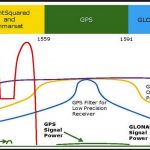June 13, 2019
[Editor’s Note: This article was written and submitted by Mark Crews and John Betz.]
With the launch of the first next-generation GPS III satellite, GPS III Space Vehicle 01 (GPS III SV01), on December 23, 2018, the Global Positioning System (GPS) took a major step in modernizing technology and capability. The U.S. Air Force has continually improved GPS since the launch of the first GPS Block I satellite in 1978, and this ongoing modernization has provided new signals, greater accuracy, and increased robustness for civil and military users. After the first 10 GPS III satellites are launched over the next few years, up to 22 GPS III Follow-on (GPS IIIF) satellites will provide yet another step increase in GPS capabilities.
Read More >
By Inside GNSS














